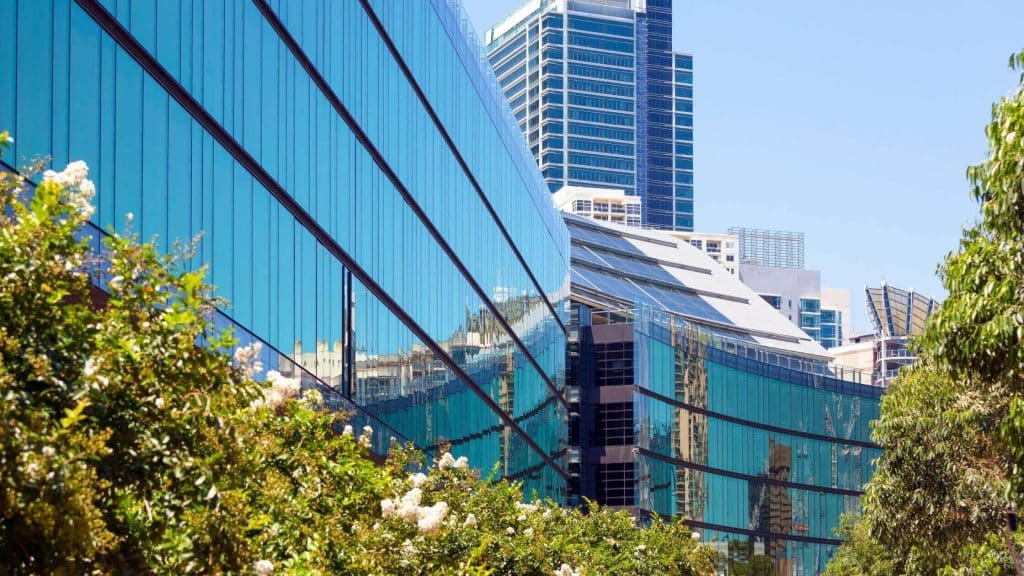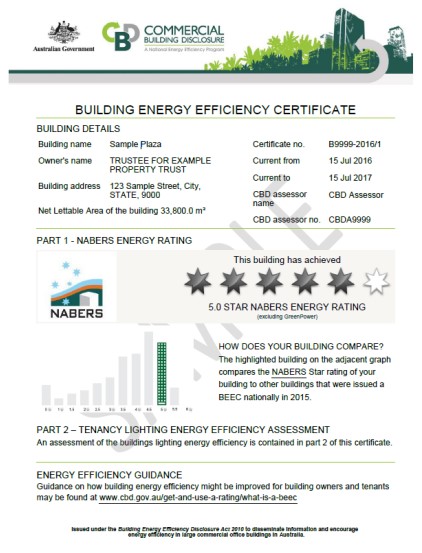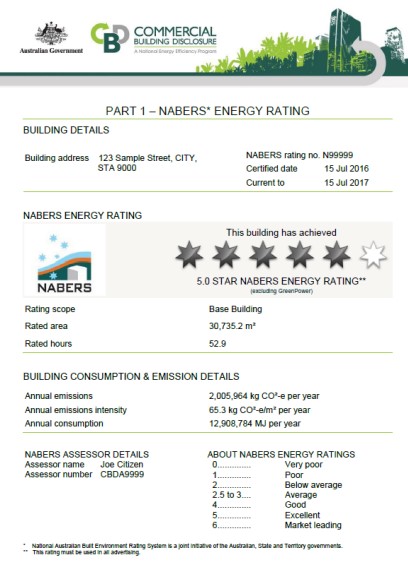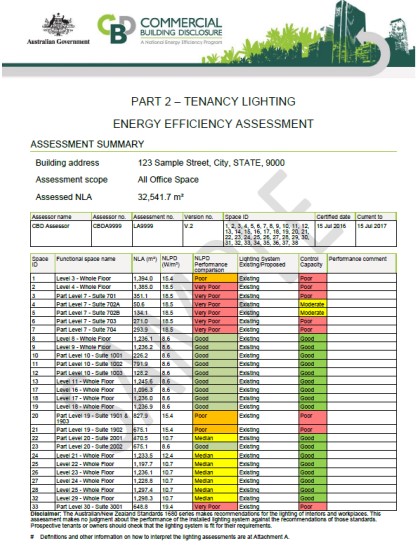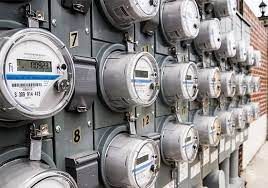Climate change and high energy prices are driving increased demand for energy-efficient and low-carbon commercial buildings and office space. Prospective buyers and tenants of commercial buildings are seeking to reduce their impact on the environment and ensure their expenditure on building maintenance and energy costs are kept as low as possible.
There are several indicators to prospective buyers and tenants of a commercial building’s energy efficiency and overall sustainability profile. These include but are not limited to Green Star Rating, NABERS Rating and the Building Energy Efficiency Certificate (BEEC). In the case of NABERS and BEECs, these are publicly available in a searchable database on the Commercial Building Disclosure website (cbd.gov.au) – more on that below.
Astute buyers and tenants of commercial buildings will take into consideration a building’s sustainability and energy efficiency profile by reviewing said ratings and certifications. It’s not uncommon for these ratings to be among the top influencing factors in their decision to proceed with (or not) the purchase or lease of a building or premise.
For example, most governments have a policy that requires them to only occupy a building/premise that meets or exceeds a certain threshold in energy efficiency ratings (e.g. NABERS > 4.5 Stars).
Higher ratings across all rating systems (NABERS, Green Star etc) mean that a building has superior energy efficiency and sustainability performance. Higher ratings suggest that a building is comparatively cheaper to run and has a lower impact on the environment in terms of greenhouse gas emissions relative to other buildings of a similar type with a lower rating.
Highly rated buildings are also known to attract a ‘green premium’. In fact, a study released by the University of Western Sydney revealed that buildings and tenancies with 5-Star NABERS Ratings increased their “green premium” by up to 9%, compared to non-NABERS rated buildings.
Commercial Building Disclosure
The Building Energy Efficiency Disclosure Act 2010 (“BEED Act”) requires owners of commercial buildings and office spaces, above 1,000 square meters in size, to disclose information about the building’s energy efficiency, tenancy lighting conditions, energy, and emissions data among other details.
The Commercial Building Disclosure Program – managed by the Australian Government Department of Industry, Science, Energy and Resources – was established in compliance with the BEED Act to improve the country’s building stock, encourage all building owners to consider energy efficiency as a practical investment, and help Australia meet its goal to transition into a carbon-free economy.
Knowing Your Obligations and Rights as a Commercial Building and Office Space Owner
Knowing your rights and obligations under the CBD programme is essential and one of these obligations is to obtain a Building Energy Efficiency Certificate or BEEC.
A BEEC is the overall energy assessment of your building or office space. It’s divided into two parts:
- NABERS energy star ratings
- Tenancy Lighting Assessment or TLA
A sample certificate is illustrated below:
- Once a building or office space passes both assessments, the BEEC certificate will be made public through the Building Energy Efficiency Register or BEER.
- The certificate is a requirement when advertising your office space or commercial space to prospective tenants or buyers.
- As the lessor of the office space or commercial building, you are required to present a valid and current BEEC free of charge to potential buyers and lessors upon their request.
- Your BEEC must be publicly available on the BEER.
- A BEEC is only valid for up to a year (365 days) and a TLA is valid for 5 years. BEECs, together with NABERS Energy Star Ratings, need to be renewed annually.
Buildings and Transactions Exempted from the Commercial Building Disclosure (CBD) Programme
Some buildings or their areas are exempted from the CBD and filing for an exemption is not required but submitting additional information to prove your facility’s exemption may be required periodically. Exemptions are granted on several conditions — based on the type of transaction and the type of building/office space. For more details, click here.
Meeting your CBD obligations and improving your NABERS and TLA ratings
As a commercial building owner, meeting your obligations by way of obtaining valid BEEC certificates requires you to have a certified assessor to provide a NABERS rating and Tenancy Lighting Assessment. You will need to have your ratings and certificate renewed each year given it’s only valid for 365 days (or 12 months).
When you partner with the experts at Ecosave, you will not only receive reliable and accurate NABERS and TLA assessments required for your BEEC certificate, but you will also get expert recommendations and practical support to significantly improve your energy efficiency ratings and maintain those improved ratings each year. Higher ratings ultimately mean an improved return on your investment.
Recommended Read: Funded Environmental Upgrade Guarantees 4.0 Star NABERS Rating for 99 St Georges Terrace (Perth CBD).
Our team specialises in identifying, designing, and implementing energy efficiency and sustainability upgrades across all types of commercial buildings – to not only improve various ratings but also reduce your energy costs and emissions output. For more information or to discuss your requirements with our team, Connect now, or call 1300 55 77 64.

